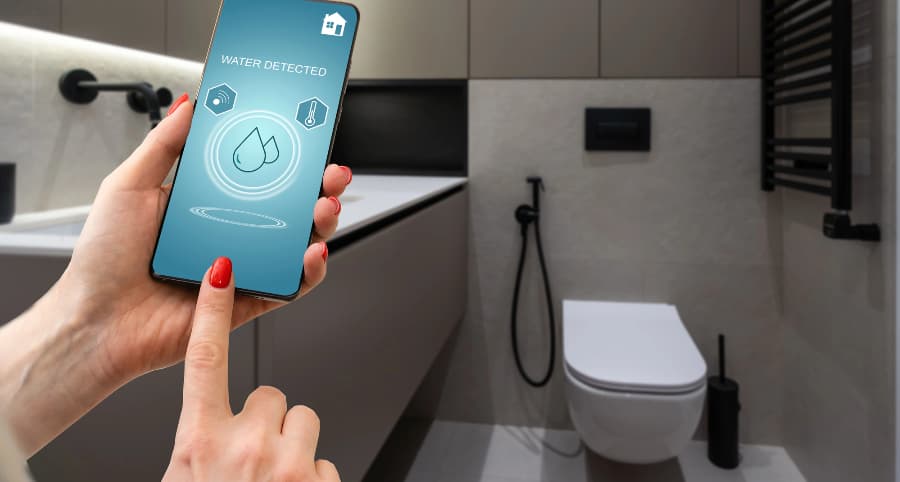How does a water sensor work and why use one with your St. George smart home?

One tiny leak in your home can cause big difficulties and thousands of dollars worth of damage. You need to safeguard against this risk; thankfully, there’s a simple way to achieve this. A water sensor is a budget-friendly, simple, and effective solution. Explore how they work and why you ought to incorporate water sensors into your St. George smart home.
How water sensors shield St. George your home
Water enters homes in many ways, whether from a broken appliance, plumbing problem, weather-related incident, or human error. However it takes place, you must know at once, and this is where water sensors come in. But how do they really work?
Many water sensors are conductive and function with corresponding electrodes. When water invades the area between the electrodes, an electrical connection is established, triggering your alarm. You’ll also find capacitive sensors that emit an electrical field. When water reaches the conductive parts of these devices, the field is broken, and your alarm activates. Optical sensors utilizing infrared LED light are an additional option.
Get more protection from water sensors
A few advanced water sensors offer even more peace of mind as they have built-in temperature sensors. This is an effective way to prevent frozen pipes. If there’s a drastic reduction in temperature, you’ll be notified immediately. Taking measures before pipes rupture will save you from flooding and expensive repairs.
Why incorporate water sensors into your St. George smart home?
When water emergencies arise, you need to be alerted at once. You can reach this goal by incorporating water sensors into your smart home. Whether you’re home to hear the alarm or away, you’ll be sent an instant notification on your smartphone. As an additional backup, your 24-hour monitoring agents will be notified. Each second matters in a water emergency to limit the destruction and disturbance to your household.
Where should you put water sensors?
Any area prone to an influx of water is an appropriate place for water sensors. Think about installing in these spots:
- Bathrooms: Position near tubs or at the back of toilets.
- Basements: Water often infiltrates lower levels via cracked walls or as a result of excess rain or faulty sump pumps.
- Near water heaters or appliances: Any water-using appliance could eventually leak.
- Below sinks: Water sensors are perfect for detecting pipe leaks in areas not easy to see.
- Attics: Catch roof leaks quickly and avoid costly repairs.
Get water sensors with your Vivint smart home
Give your home the complete protection it requires with modern components from Vivint. Our water sensors in St. George link to your Vivint smartphone app to send you instant updates when your alarm is triggered. You also benefit from built-in temperature sensors to prevent pipe freezing. Learn more about the smart home devices available in St. George by reaching out to (435) 375-3735 today.
